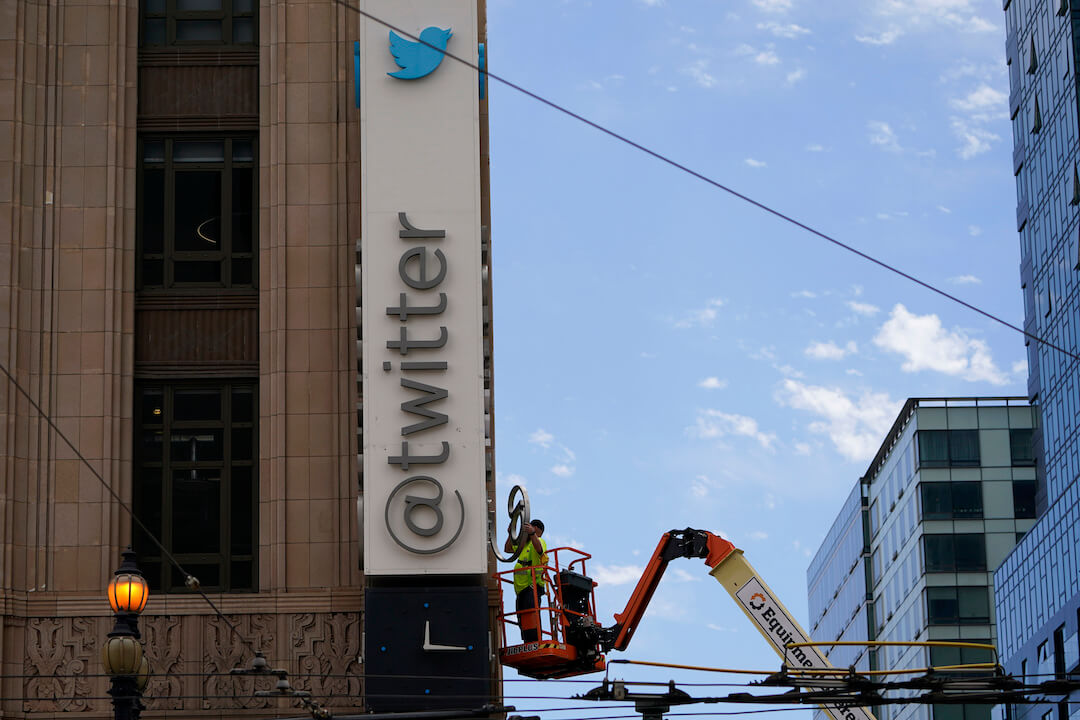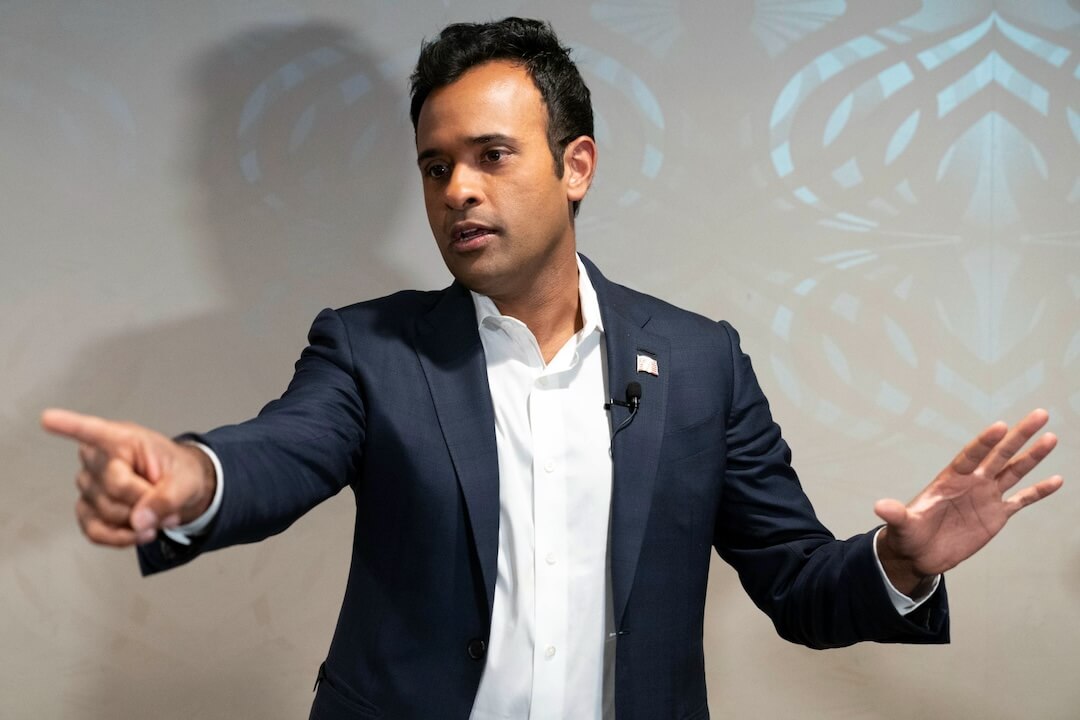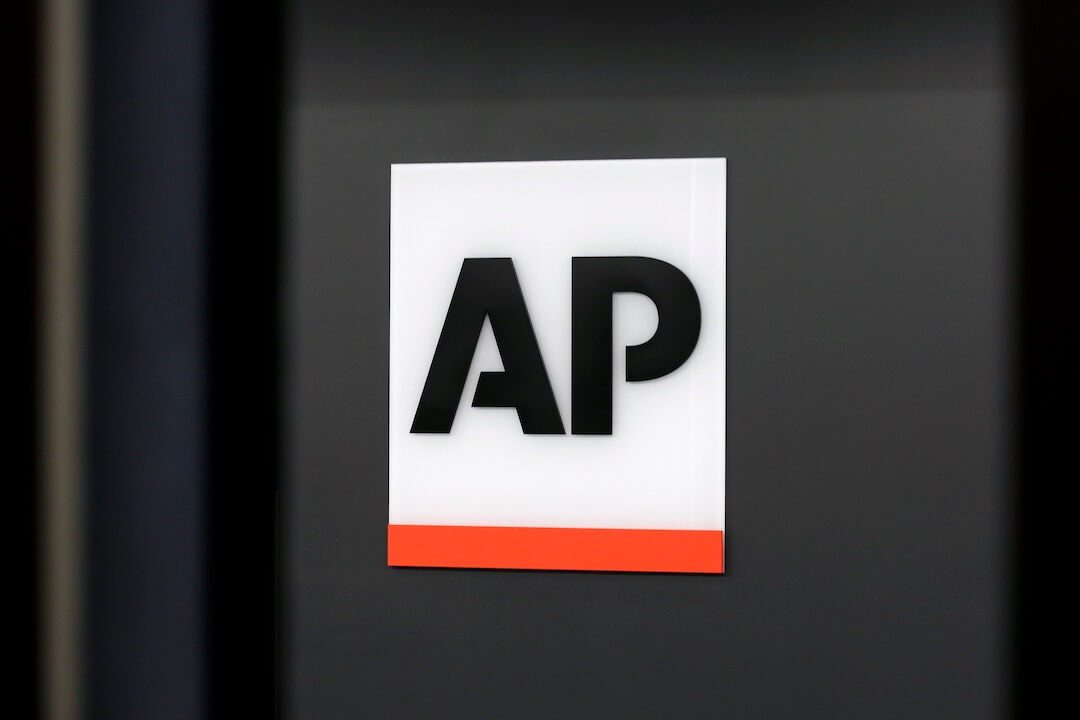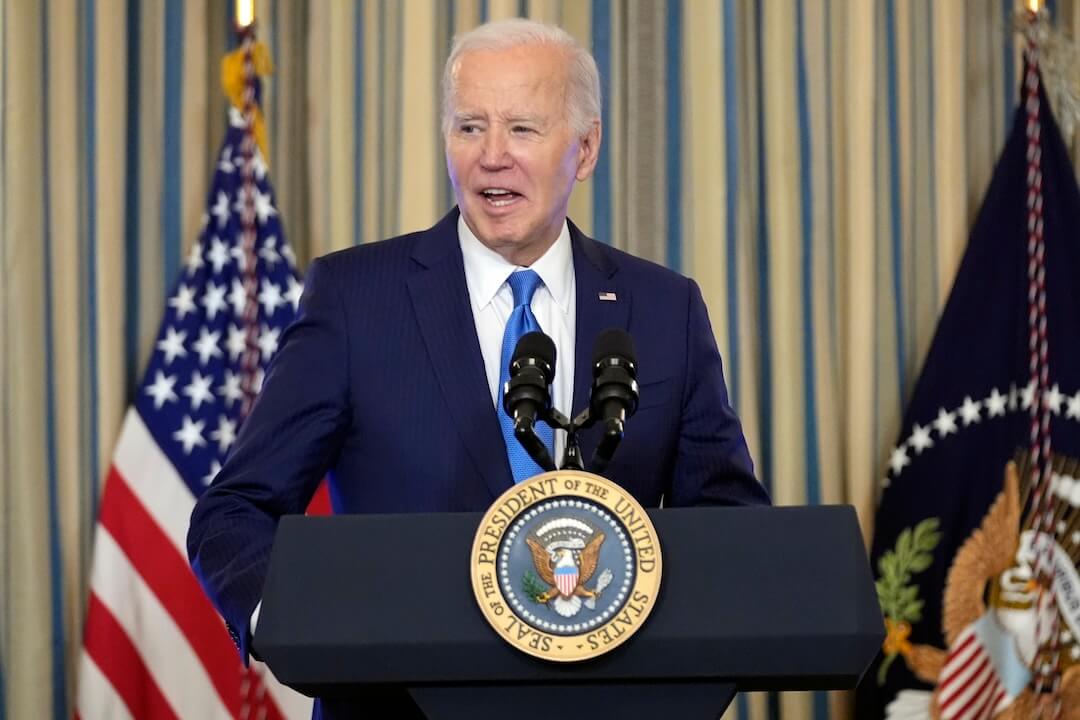You spend $44 billion of your own money to buy one of the most successful and recognizable social media sites on the planet.
You immediately sink company morale by slashing three-fourths of the jobs, while alienating your users by changing key parts of the site — such as the blue check mark verification accounts and charging for premium use.
You ban some journalists for no apparent reason, and wrongly call legitimate news sites such as NPR “state-affiliated media.” Yet, you allow the former president to rejoin after he was banned in the wake of the Jan. 6 insurrection.
Because of content moderation changes, research showed rises in hate speech on your site — including slurs against Black people and gay men, as well as antisemitic posts.
What in the world is Chief Twit (his words, not mine) Elon Musk doing?
The Washington Post’s Joseph Menn and Marianna Sotomayor wrote, “Musk’s new policies have amplified hate speech, misinformation and extremism and have driven users and advertisers away, according to studies and surveys. Attacks on gay and transgender people and ethnic minorities have surged. Propagandists for multiple countries have purchased the new check marks, making their voices louder.”
Musk and new CEO Linda Yaccarino have pushed back on that, saying the numbers are distorted and that less hate speech is being seen on Twitter.
“But,” the Post wrote, “Musk recently acknowledged that ad revenue is down about 50 percent during his tenure and that the company still has negative cash flow.
And if all that wasn’t bad enough, you decide to get rid of the one thing everyone associates with your company? That little birdie that was your logo and identity?
Again, I ask: What is Musk doing?
Twitter is now X. And people seem to just flat-out hate it.
Musk, however, doesn’t care. He loves the letter X and has long been associated with it. He hinted over the weekend that the logo change was coming, and on Monday, it became official.
Mike Proulx — a vice president and research director at Forrester, a leading global market research company — told The New York Times’ Ryan Mac and Tiffany Hsu, “The app itself has become a cultural phenomenon in all sorts of ways. In one fell sweep, Elon Musk has essentially wiped out 15 years of brand value from Twitter and is now essentially starting from scratch.”
Esther Crawford, Twitter’s former head of product, tweeted, “Corporate seppuku: destroying your own product or brand. Usually committed by new management in pursuit of cost-savings due to a lack of understanding about the core business or disregard for the customer experience. The result is a massive loss of shareholder value.”
So why do it? Sure, Musk likes to be a provocateur. And some of his decisions so far with Twitter seem to be the antithesis of shrewd business. Still, this is, by far, the biggest change he has made to the site since buying it. There must be more to it than the fact that, apparently, all the bird references simply annoyed him.
In their Dealbook newsletter for The New York Times, Andrew Ross Sorkin, Ravi Mattu, Bernhard Warner, Sarah Kessler, Michael J. de la Merced, Lauren Hirsch and Ephrat Livni get into some of the details of why Musk believes X marks the spot for his company.
They write, “It’s more than a branding exercise. As Twitter has struggled under Mr. Musk — a pivot to relying on subscriptions hasn’t made up for a 50 percent drop in ad revenue, negative cash flow, and a new threat from Meta’s Threads — he has increasingly emphasized the company’s importance in what he calls X. The billionaire has long dreamed of creating a super-app that could serve as a platform for everything users could do online, much as WeChat does in China. But as third-party data suggests user numbers are falling, it’s not clear how much runway Mr. Musk has to get a reborn X airborne.”
My guess: not much runway at all, and it’s getting shorter by the moment.
All hail journalist Barbie

This Barbie has a Pulitzer. (Courtesy: Warner Bros.)
For this item, I turn it over to my Poynter colleague Annie Aguiar.
Trust in the press may be low in the real world, but in Barbie Land the Fourth Estate is alive and well.
In the recently released “Barbie,” directed by Greta Gerwig and featuring a cavalcade of sequined Barbies of every kind, alongside Doctor Barbie and Physicist Barbie, we see an impressive, pink-clad Journalist Barbie. Played by Ritu Arya, Journalist Barbie canonically is one of the most lauded reporters of all time, winning both a Pulitzer and a Nobel Prize for Journalism (which does not exist in the real world, but is very real in Barbie Land).
In the movie, we see President Barbie stonewall Journalist Barbie with a “no comment,” but the dauntless reporter nevertheless prevails. We see her reporting on the scene, anchoring behind a desk, winning her Nobel, pretty in pink all the while. (No spoilers here, but one quick piece of Journalist Barbie reportage arguably veers into state-sponsored manufactured consent in a Noam Chomsky-meets-Mattel moment.)
Obviously, I’m playing up the intrepid reporter angle on a movie that’s not exactly “Spotlight,” but while watching “Barbie” I was struck by the choice. It matters to me that in the lineup of dream jobs in a cotton-candy version of the real world, journalism is given a prominent role.
News isn’t new to Barbie. A National Geographic photojournalist Barbie can be yours for $14.99. News anchor Barbie was part of the 60th anniversary “You Can Do Anything” 2019 career-themed Barbies release, holding a microphone that “helps this journalist report on global news and top stories from the scene!” Another news anchor Barbie was released earlier in 2010.
Even iconic investigative journalist Ida B. Wells has a Barbie, holding a miniature copy of the anti-lynching newspaper Memphis Free Speech.
News industry employees can get tunnel vision on what it means to work as a journalist. Seeing it through Barbie’s eyes is affirming: Girls can be brave, bold and unapologetic; demand answers of figures in power; and they can do it by being journalists (OK, yes, even if the question posed in “Barbie” is, “How is every day the best day ever?”).
It’s heartwarming that in the mosaic of aspirational careers for young girls, “journalist” is alongside doctor, president, mermaid and anything else a little girl would dream of growing up to be. Just don’t let them know about the pay in local markets, yet — that comes later.
San Diego departures
Well, that didn’t take long. Already staffers are leaving The San Diego Union-Tribune after it was sold to investment firm Alden Global Capital. Los Angeles Times owner Dr. Patrick Soon-Shiong sold the San Diego paper to Alden just two weeks ago.
Major departures include editor-in-chief and publisher Jeff Light — one of several high-profile staffers who accepted buyouts. Also leaving are director of photography and video Sam Hodgson; reporters Kate Morrissey and Dana Littlefield; and Greg Moran, an investigative reporter who had been at the paper for three decades.
Axios’ Andrew Keatts has more.
HuffPost changes
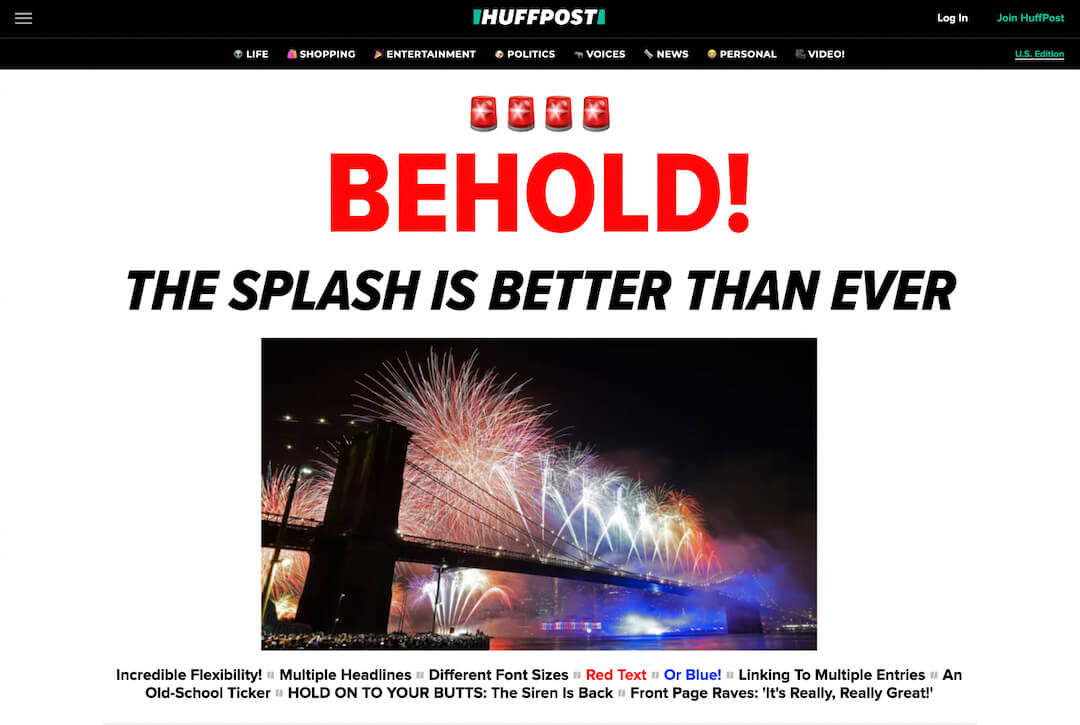
HuffPost announces its new homepage design with this example of what its homepage looks like. (Courtesy: HuffPost)
HuffPost has redesigned its homepage.
The homepage includes new fonts, red text (not just black), siren emojis, tickers and fewer constraints on how many lines of text it can include.
In the past, the site liked to promote its “splash” — a lead story with a giant headline and a main photo. But, HuffPost says the homepage now allows for variation in font size and font color, as well as other components.
The Times on the Post
The New York Times’ Benjamin Mullin and Katie Robertson had an insightful piece over the weekend about The Washington Post: “A Decade Ago, Jeff Bezos Bought a Newspaper. Now He’s Paying Attention to It Again.”
You can check it out in its entirety, but a couple of items stood out to me.
One, Mullin and Robertson wrote, “The Post is on a pace to lose about $100 million in 2023, according to two people with knowledge of the company’s finances; two other people briefed on the situation said the company was expecting to miss its forecasts for ad revenue this year. They spoke on the condition of anonymity to discuss internal financial matters. The Post has struggled to increase the number of its paying customers since the 2020 election, when its digital subscriptions peaked at three million. It now has around 2.5 million.”
Wow, $100 million? Bezos paid $250 million for it in 2013.
The other interesting thing, however, is don’t look for Bezos to bail on the Post. Mullin and Robertson wrote that Patty Stonesifer, the Post’s interim chief executive, has repeatedly told staffers that Bezos is committed to the Post and sees it as a legacy for his family.
Media tidbits
- NPR has named Edith Chapin as senior vice president of news and editor-in-chief, putting her in charge of NPR’s journalism and journalists around the world. Chapin had been the interim head of news since November 2022.
- Amy Sherman from Poynter’s PolitiFact with “Marjorie Taylor Greene said Jack Smith ‘only targets Republicans.’ That’s wrong.”
- Kayla Tausche has joined CNN as a senior White House correspondent. She spent the past decade at CNBC, where she was most recently an anchor and White House correspondent.
- The New York Times’ Lauren Hirsch and Benjamin Mullin with “Altice USA Said to Be Considering a Sale of Cheddar News.”
- Mediaite’s Jennifer Bowers Bahney with “‘The View’ Drops Ana Navarro’s Audio During Heated Take Down of Ron DeSantis’s Effort to ‘Whitewash Slavery.’”
- CNN’s Matias Grez with “BBC apologizes for reporter’s ‘inappropriate’ question to Morocco women’s team captain.”
Hot type
- The Washington Post’s Jesús Rodríguez with “She was a GOP congresswoman. Her son is a transgender activist.”
- Poynter’s Roy Peter Clark with “What Tony Bennett taught me about the life of a writer.”
- This story is behind a paywall, but it is superb. Jonathan D. Salant — assistant managing editor of politics for the Pittsburgh Post-Gazette — writes about a play written by his son. The play is about the son’s mother and Salant’s first wife, who died by suicide. His story: “Son’s play, ‘Rite of Passage,’ is a heart-rending love note to his father.”
More resources for journalists
- Subscribe to Poynter’s Friday newsletter, Open Tabs with Poynter managing editor Ren LaForme, and get behind-the-scenes stories only available to subscribers.
- Sign up for Beat Academy (Now-Oct. 19) (Webinar series) — You’ll get tips, sources, inspiration and ideas to cover emerging newsroom beats. Enroll now.
- Strength in Numbers: How to Use CDC Data to Upgrade Your Mental Health Reporting (Aug. 30) (Webinar) — Enroll Now.
- Power of Diverse Voices: Writing Workshop for Journalists of Color (Nov. 15-18) (Seminar) — Apply by Sept. 15.
Have feedback or a tip? Email Poynter senior media writer Tom Jones at tjones@poynter.org.
The Poynter Report is our daily media newsletter. To have it delivered to your inbox Monday-Friday, sign up here.

